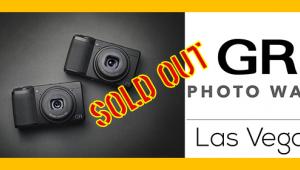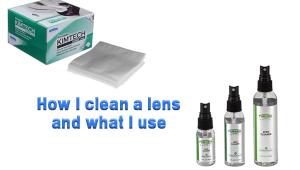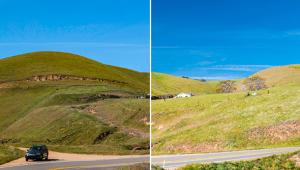Pancake Lenses, Mulching Mowers and Other Things

However, I will confess that I once dated a girl based on a positive review. That episode lasted an even shorter period of time, but had a similar ending. We were mowing along nicely, then Bam! We hit something that irreversibly dulled the blade. But I digress.
Hoping to fare better this time, I ordered the 25mm f2.8 lens from B&H Photo late on a Wednesday night and took delivery that Friday. Cost was $217, and UPS ground shipment was free. When the package arrived I thought the box was empty—it was that light.
This lens is small—which is great, because my one-and-only Olympus camera is small, too. I own an E-410. My wife bought it for me a year or so ago because I have a pain in the neck—and I complain about it so enthusiastically that I become a pain in the neck. It’s called radiculopathy, a ten-dollar word that means that distressed nerves in my neck cause pain and discomfort in my hands and fingers. It’s pretty common among photographers and other people who don’t have enough sense to carry heavy things properly.
The Olympus E-410 combined with the 25mm f2.8 Zuiko lens weighs lighter on the neck than the kiss of an angel and is really fun to use.
The lens is sharp, too. And it’s very bright. The f2.8 aperture makes it the fastest Zuiko (Olympus) lens I own. The 14-42mm kit lens that came with the camera is an f3.5-5.6. At f2.8, the 25mm Pancake’s extra brightness makes it just that much easier to use indoors under dim light, which is important because that’s where this camera will spend most of its time.
Since it’s a member of the 4/3 system, the 25mm focal length delivers the equivalence of a 50mm. I shot almost exclusively with 50mm lenses in my youth. Back then zooms were typically in the 80-200 or 70-210 telephoto range—not something you could use on all occasions. It wasn’t until we at Minolta introduced the Maxxum 7000 packaged with a 35-70 zoom in 1985 that short zoom lenses became standard fare.
I really like this lens. Knowing that I cannot zoom—that I must compose by adjusting the distance between me and the subject—forces me to think a bit differently, and that’s refreshing.
I should point out that all of the good things I wrote about the Olympus E-410 also apply to its successor, the E-420. The newer model has a larger LCD, faster continuous shooting speed and couple other upgraded features.
Now, let me tell you about this lawnmower that doesn’t need a bag attachment to collect the grass clippings...
- Log in or register to post comments

















































